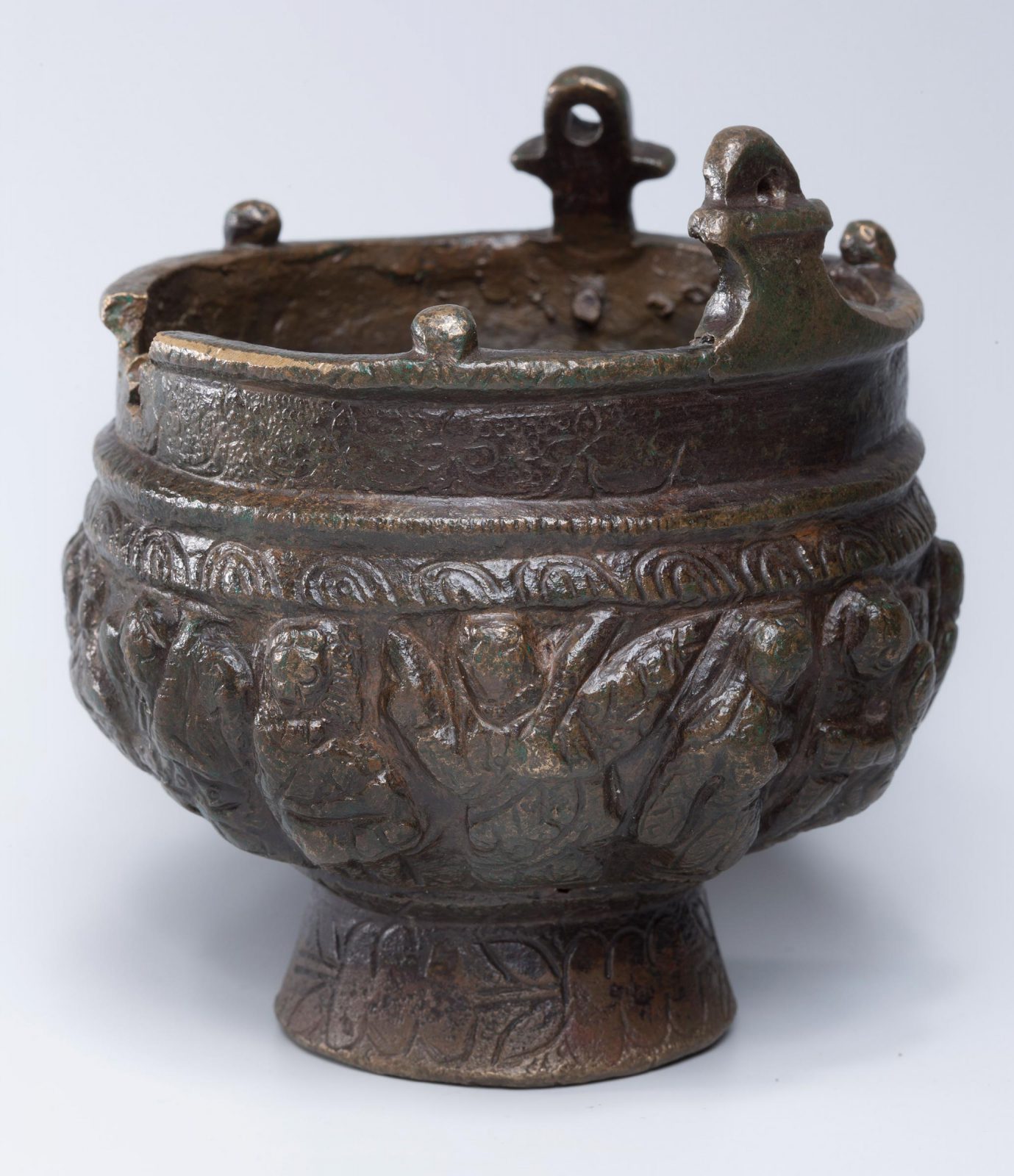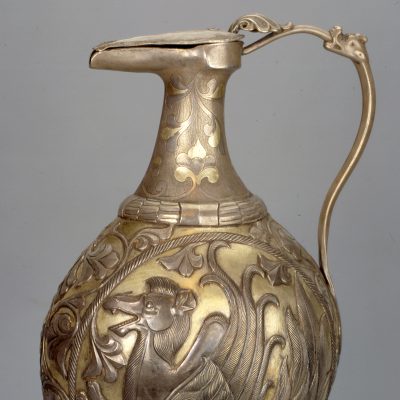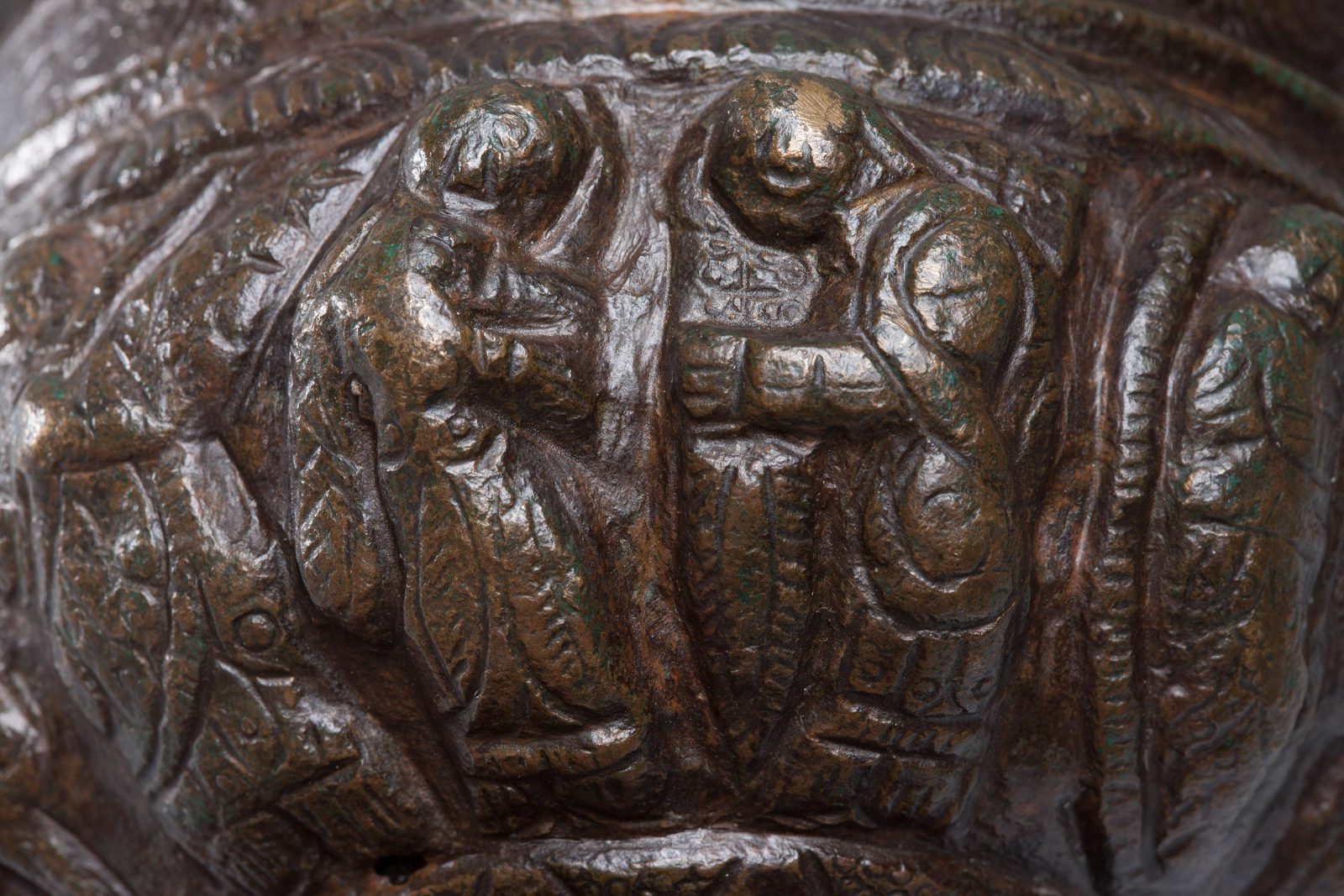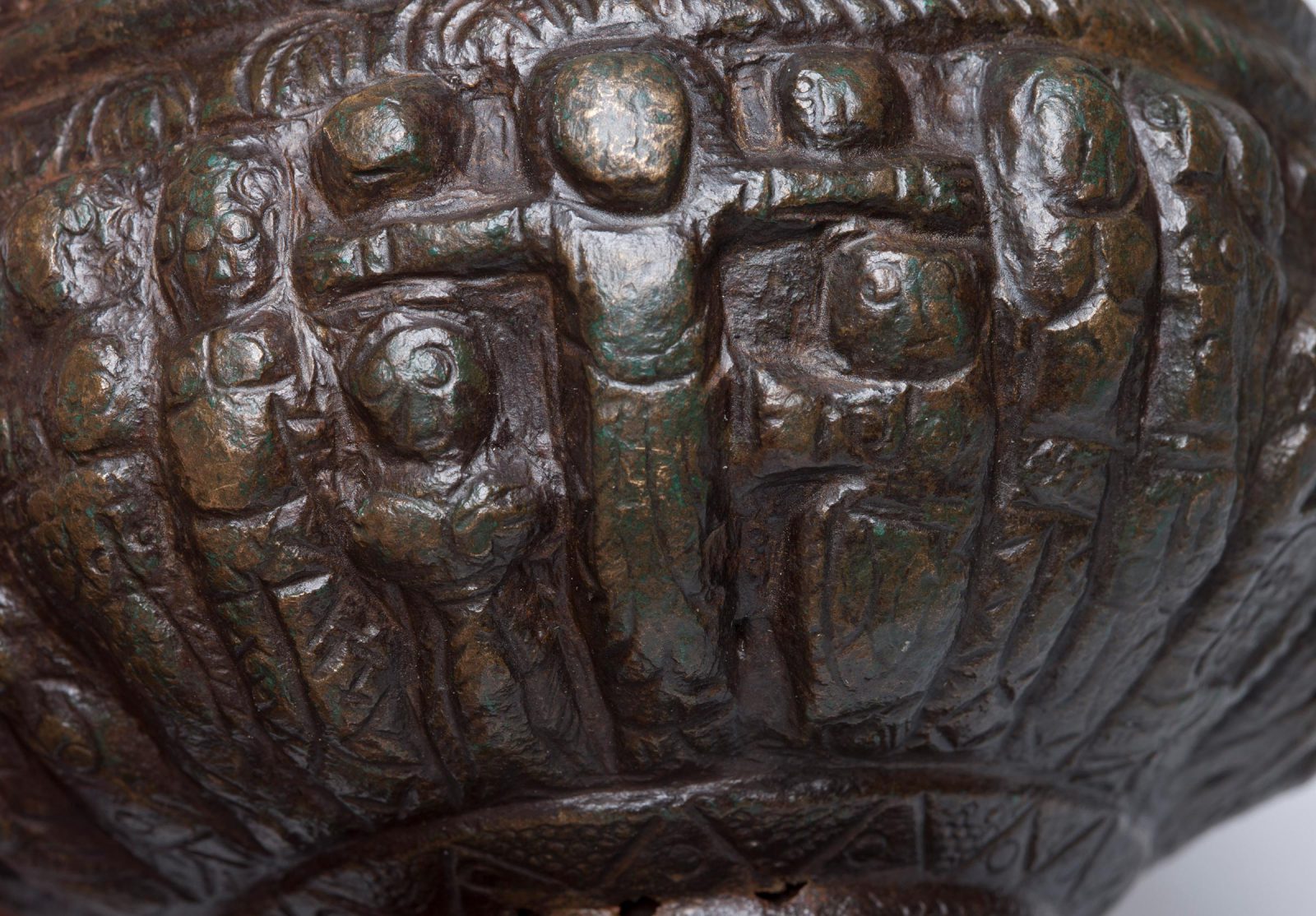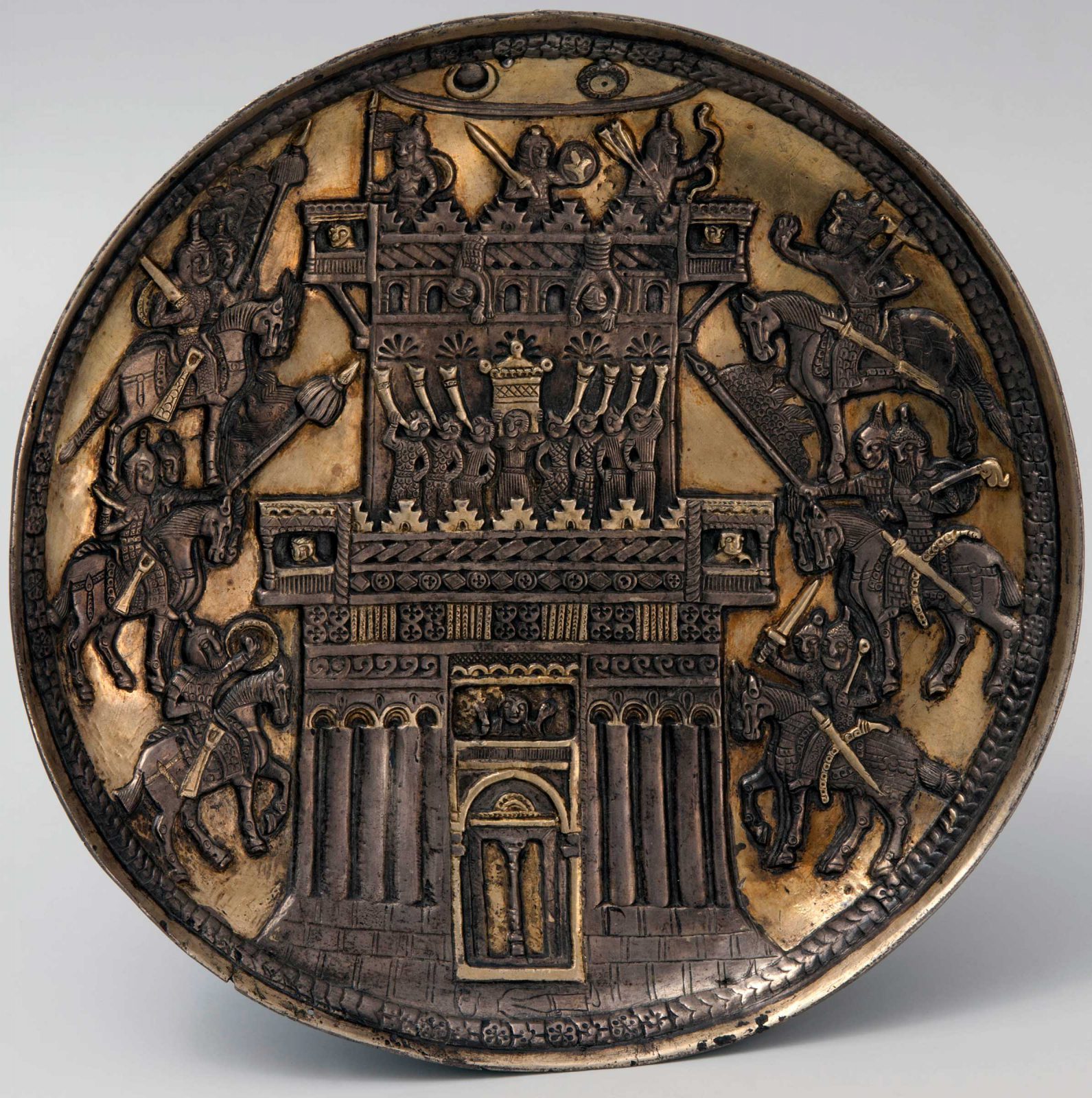
Anikova Plate
Silver and Gilt Plate Showing the Siege of a Castle
Sogdian, 9th–10th century
Cast, engraved, and gilded silver; Diam. 23.7 cm
Found in 1909 near village of Anikova, Perm Province , Russia
The State Hermitage Museum, St. Petersburg, S-46
Photograph © The State Hermitage Museum
The scene on this plate has been identified as a series of episodes from the biblical book of Joshua. Reading from the bottom up, the harlot Rahab peers out the window above a door through which she lets Joshua’s spies into the Canaanite city of Jericho. Above, in the center of the plate, priests blow trumpets as the Israelites’ Ark of the Covenant is held aloft (Joshua 2 and 6), and farther up, another Canaanite city has been taken. At the top are the sun and the moon, which at the orders of Joshua (the warrior on horseback in the upper right of the plate) have come to a standstill in the heavens (Joshua 10:12–13).
Although the plate was found near Malaya Anikova in the region of the Ural Mountains in Russia, it was probably made in and for a Sogdian Christian community located in Semirechye (southeast Kazakhstan and northern Kyrgyzstan). Situated along trade routes leading east, the region had been settled by Nestorian Christian Sogdians, whose communities survived into early Islamic times. Other examples of metalworkSogdian Metalworking Learn more about Sogdian metalwork, such as the bronze censer (or thurible) found near Samarkand , are further evidence of the vitality of Christian communities in Sogdiana; Fig. 1-3. Because the “Joshua Plate” was formed by casting instead of the usual method of fashioning decorated metalwork at the time, the Russian archaeologist and metalwork specialist Boris I. MarshakBoris Marshak Learn more about the Russian scholar Boris Marshak suggested that it had been copied from an earlier piece. He had observed that such engraved details as the weapons and armor were from the 9th–10th centuries, but the castle was typically 8th-century in style. Indeed, an almost identical cast–silver gilt plate was subsequently found in a Shamanic shrine near Verkhne-Nil’din , in northwestern Siberia.
How did these two plates, fashioned in Sogdian territories at least a century apart from each other, end up at almost opposite ends of the vast region that would become the Russian empire? In the case of the Anikova plate, it most likely arrived by way of the “Fur Road” that linked the East Roman empire (Byzantium) with Central Asian merchants—a route probably pioneered by the Sogdians and their Turkic allies and that continued well after the advent of Islam. Similarly, the Nildin plate was most likely traded north and at some point acquired by a local Siberian community that used it in their shamanistic rituals.
by Judith A. Lerner
See Boris I. Marschak, Silberschätze des Orients (Leipzig: E. A. Seemann Verlag, 1986), 85, figs. 209–12; see also V. P. Darkevitch and B. I. Marshak, “Tak nazyvaemom sirijskom blyude iz Permskoj oblasti Так называемом сирийском блюде из Пермской области” [On the so-called Syrian Plate from the Perm region] Sovetskaya arkheologija Советская археология 1974 (2), 213–22.
A. V. Baulo, “Legendarnoye Nil’dinskoye blyudo” Легендарное Нильдинское блюдо
[The Legendary Nildin Dish] Nauka iz pervykh ruk Наука из первых рук [Science First-Hand] 22, no. 1 (2009): available (in English) at https://scfh.ru/en/papers/the-legendary-nildin-dish/ and (in Russian) at https://scfh.ru/papers/legendarnoe-nildinskoe-blyudo/.
Thomas S. Noonan, “The Fur Road and the Silk Road: The Relations between Central Asia and Northern Russia in the Early Middle Ages,” in Kontakte zwischen Iran, Byzanz und der Steppe in 6.-7. Jh., ed. Csanád Bálint (Budapest: Paulus-Publishing Verlag, 2000): 285–301. The Anikova plate was, in fact, reportedly found with two inscribed bowls—one with a 10th-century Persian inscription, and the other with an 11th-century Arabic one.
Other metalwork, Sogdian as well as Sasanian, has been found in Siberia in shamanistic places of worship, with front and back surfaces of the plates crudely incised with figures and symbols related to local beliefs.
